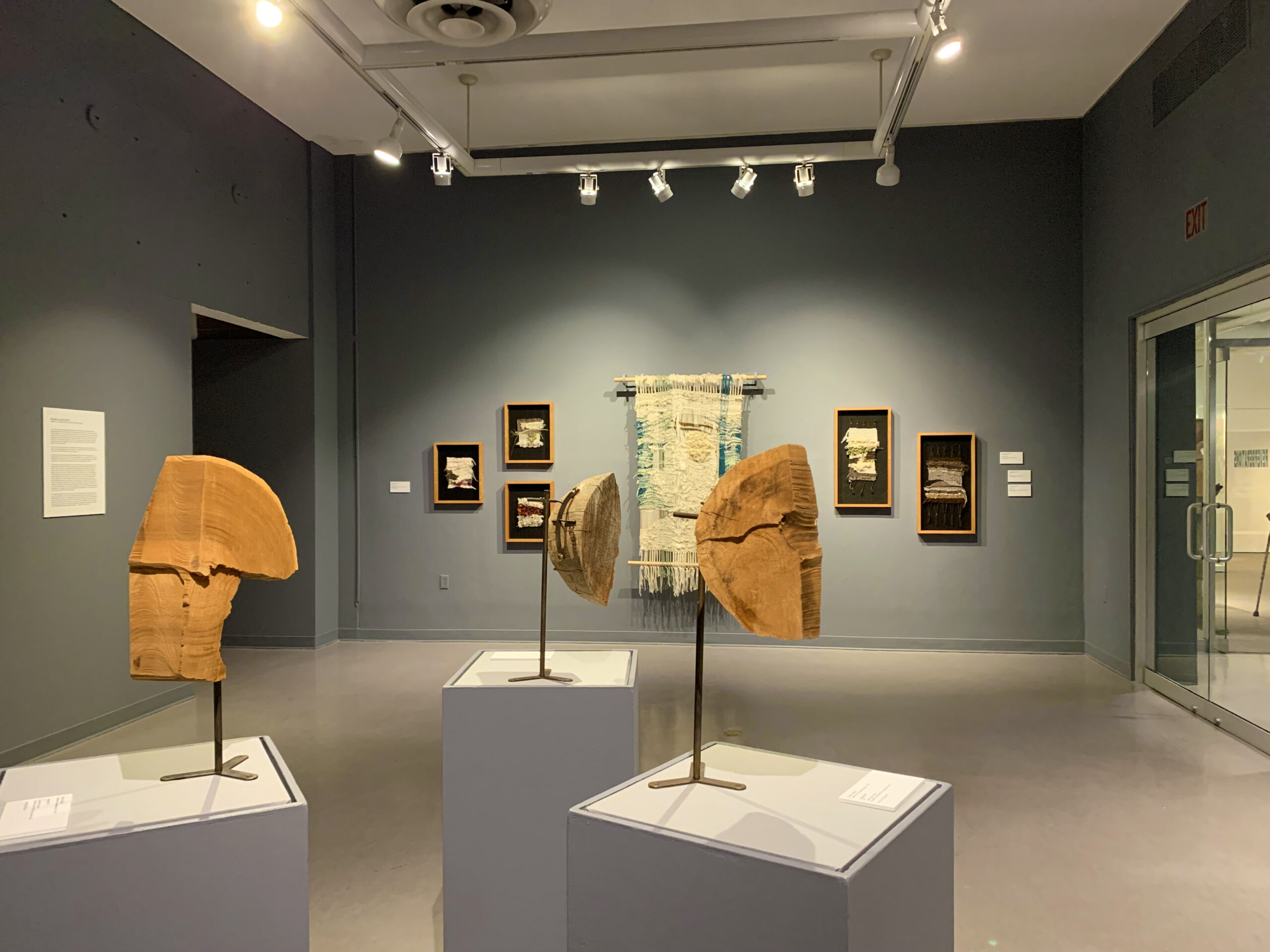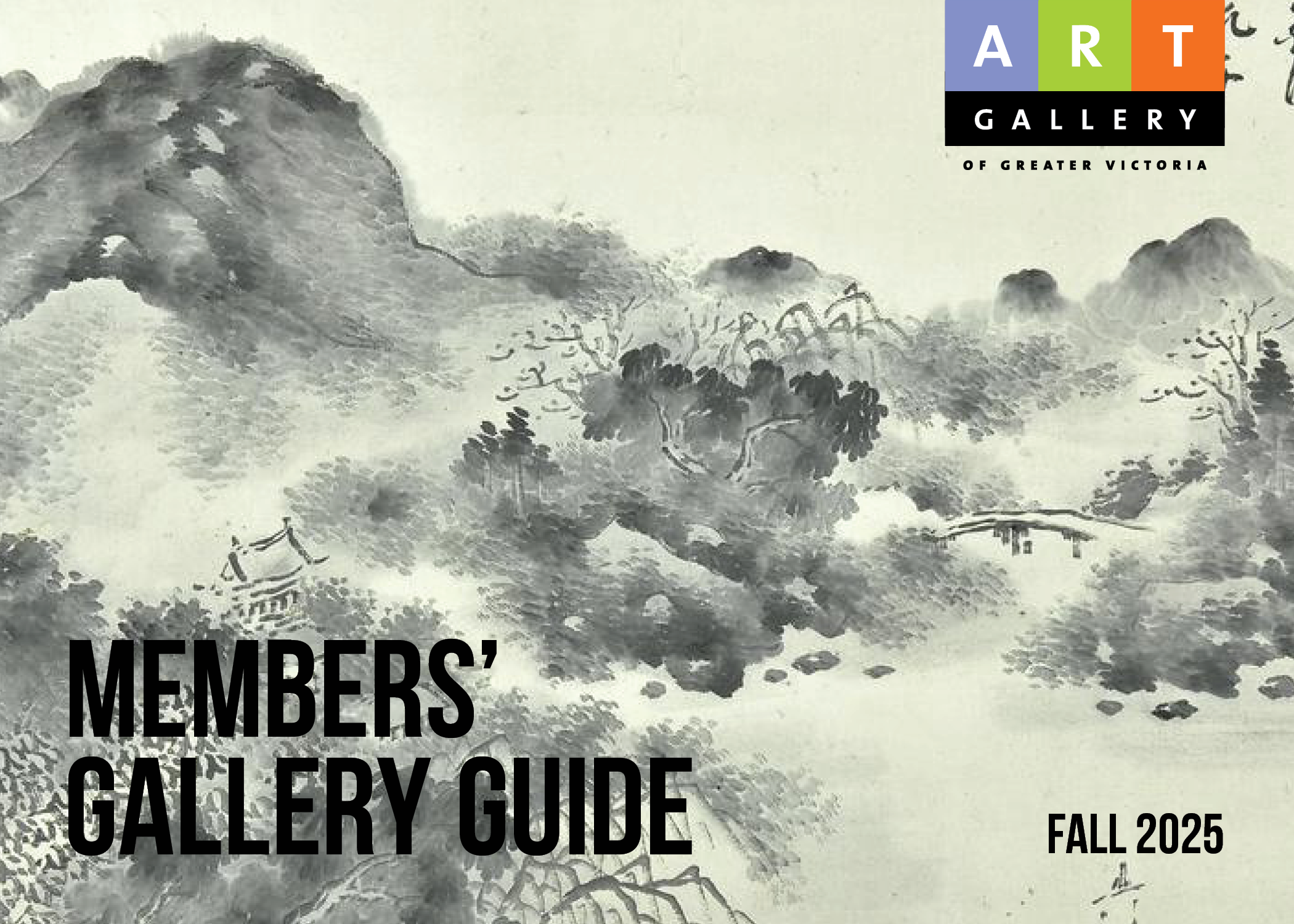By Mel Granley, Guest Curator
A few months ago, in the historic Spencer Mansion where AGGV employees work, I set up my laptop and logged onto a Zoom call to record a #WIP Podcast episode between three artists from the exhibition Reverberations: Emily Geen, Estraven Lupino-Smith, and James Summer. For the next hour and a half, although we were each in our own rooms looking into a screen, we came together and had a vibrant and endearing conversation about how relationships influenced the show, our shared experiences as emerging art practitioners, and ideas of institutional memory.
Each of us came to the discussion brining a different experience, as artists and art practitioners, where we are in our careers, and the way we approached the exhibition. Our podcast group was brought together with the idea that the four of us are in the early stages of our careers, and through our similar but differing experiences and practices, a sweet and thoughtful conversation emerged. This discussion was hosted by me, as an employee of the gallery and as one of the curators, and I came with a set of prepared questions. A topic we focused on for much of the discussion was the role of relationships and the way they had influenced Reverberations, and to what extent the role of the institution largely fosters relationships with different people and communities. We talked about the different relationships that lead us to the exhibition: new relationships, pre-established relationships, and the artistic relationships that had developed between the collection artists and invited artists.
The relationship between the collection artist and the invited artist is a rather thought-provoking one and differed for every artist involved in the show. For example, Estraven was able to speak with Sonny Assu, the artist whose work they were responding to, while Emily and James hadn’t met or spoken with their artists. It is intriguing to conceptualize the relationship that forms between these artists who have never met or spoken, while their works are interacting and creating a dialogue within the exhibition space that inherently creates a connection between the works and subsequently the artists. It is a rather tender process, really, and I’m so grateful to have been apart of this phenomenon.
One of the collection artists came up many times throughout our conversations: Robert Youds. His work is in dialogue with James’ poems, and coincidentally he has relationships with some other folks involved with the exhibition as well! He was Emily’s graduate supervisor, and worked with the gallery’s Digital Assest Coordinator, Marina DiMaio, who organizes and produces the WIP podcast. He came up several times throughout our conversation, and as you listen you can hear the warm way in which everyone refers to him.
As our conversation neared its end, there was enough time for me to ask the group if they had any questions for each other. James spoke up and, in more or less words, asked if anyone else had felt any trepidation about creating work that would be in dialogue with an artist whose career was so well established and who had already done so much. This question resonated with everyone on the call, and the discussion that followed was very sincere in examining the nervousness that comes along with being someone emerging in their career.
The camaraderie between the three artists was so fun to see play out and by the end of the call I was sad to say goodbye, but excited about the conversation we had recorded to share with others. Something that I have taken away from the Reverberations exhibitions, is the way that the relationships stay with you. Now I have a relationship with all three of these artists, and they with me and one another, and this is something we can each take with us as we head on with our careers and life. Our relationships to one another shape our experiences, and this can be seen through the exhibition Reverberations, on now until September 25th.
If you’d like to listen to the WIP Podcast episode this article is covering, you can listen here!



